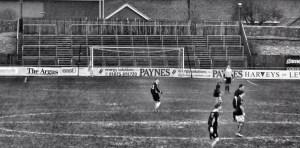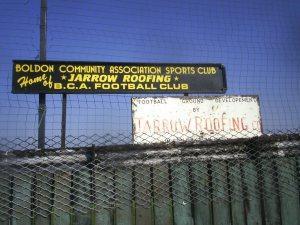Easy, so says one of the hottest properties of the Northern Premier League, Andy Hudson.
Communication is everything off the pitch in modern football. This is an era of social media, where the internet is often the first port of call ahead of newspapers and television when it comes to how society absorbs their news. And there’s often an unquenchable thirst for that news.
This doesn’t just apply to professional football, where Newcastle United fans continue aghast at Mike Ashley’s continued silence, but something that spreads down into non-league football.
There’s an unquestionable requirement for non-league clubs to open up, to seek new ways to appeal to football fans and then, once their attention has been grabbed, or even ruffled, to start positive engagement with these fans in order to get them along to the grounds on a Saturday afternoon.

Last season I was working with Hebburn Town. I left in June to cross South Tyneside – to head up Media & Communications for my local team, Jarrow Roofing BCA. With players the decision to leave often comes down to wanting to play for a certain manager, or to play alongside their mates.
My decision, while remaining with Paul Bennett, who actually talked me into devoting my spare time to Hebburn originally, had some bearing, was mainly taken with what I mentioned at the very start: that need for a club to communicate – and often that comes down to the willingness of those involved at a football club.
The willingness to allow new people into a circle of knowledge is often the first step. That comes with internal communication first. From that point there’s a need to identify what information should be cascaded out publically, thus extending the circle of knowledge.
If there is no desire for the first, then it’s difficult to accomplish the second. And then there is no communication and clubs remain exactly where they were before this social media boom, this accessing of news through technology, this social sharing pattern that now envelopes the Earth.

But clubs who keep existing and prospective supporters in the dark will find it increasingly more difficult to improve their attendances – and considering it’s so difficult as it is, that’s a frightening thought for the future.
So, how do we achieve this? Besides from a shift in attitudes.
It’s certainly something that many clubs don’t have the resources for – yet. But.
Let’s start with club dedicated Twitter accounts. Not an account named for a club yet then discusses X-Factor or the latest happenings down Lassisters.
If people want that…well, they’ll follow a teenager (and perhaps be able to decipher most of the tweets at the same time). We want news. NOW! About the club. Who scored? And not just “number 4 nods in at the back stick”. Attention to detail. That’s not beyond most people.
But the biggest step needs to come with websites. How many club sites resemble something akin to reporting on kids hoofing a ball outside your house? A fair few. Look around at great websites…like Lewes have, or Spennymoor Town, or, biased opinion aside, Jarrow Roofing BCA. These are sites that belong to a professional era; the modern world. And we should all be a part of it.
The FA, while spending quite a bit as it is on grassroots football (but never enough, right?) could get their regional bodies working.
Arrange social media training, website building training, any training that’ll help clubs not just today but tomorrow. I know it sounds difficult when they can’t even get links working for the early FA Cup draws but it really is inexpensive and not in the way time consuming. Clubs then have valuable tools to get communicating.
Let’s even push the boat out here. Get The FA to pay for every non-league club to have their own web domain. That’ll cost £25 for two years – or in other words, half the fine of a red card that could be reimbursed to clubs.
You see, there’s no pay out here. The funds, to prop up and help clubs grow beyond their current position in terms of grabbing the attention of locals could all come out of the wealth generated by the regional bodies through their fining systems. Give a player a red card and collect the cash, or give half of the first fine back and help a club emerge into this glorious new era.
We might still grumble about the decision but hey, at least we’ll read about it on our brand new website.
You can follow the fortunes of Andy Hudson and Jarrow Roofing on Twitter.

